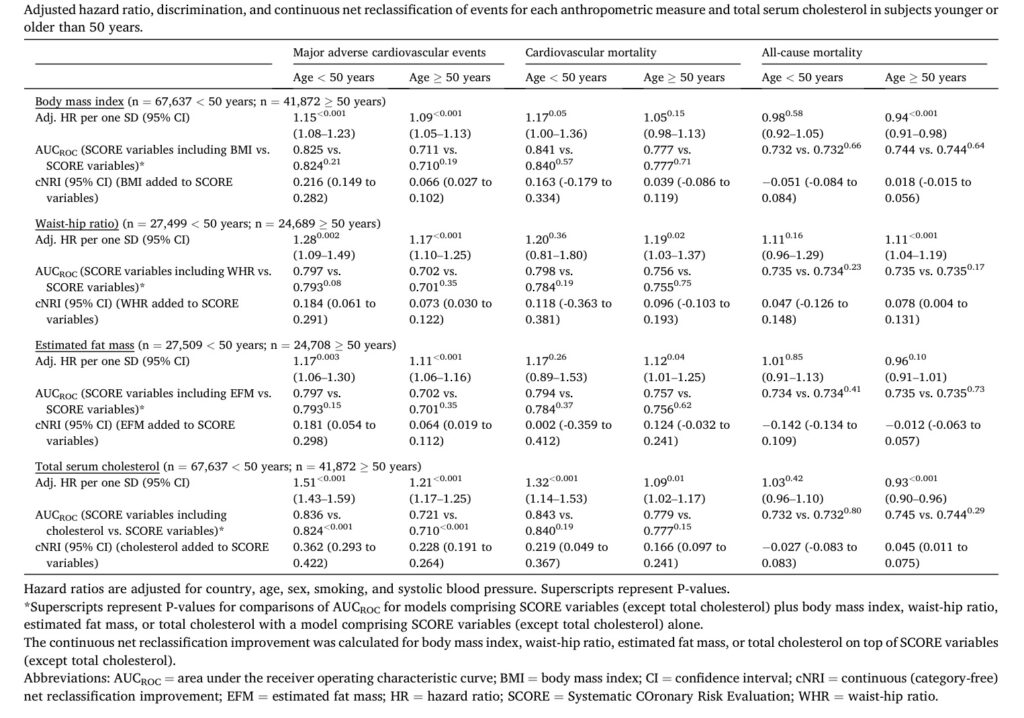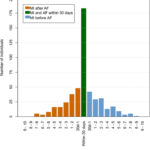
Simple cardiovascular risk stratification by replacing total serum cholesterol with anthropometric measures: The MORGAM prospective cohort project
To assess whether anthropometric measures (body mass index [BMI], waist-hip ratio [WHR], and estimated fat mass [EFM]) are independently associated with major adverse cardiovascular events (MACE), and to assess their added prognostic value compared with serum total-cholesterol. The study population comprised 109,509 individuals (53% men) from the MORGAM-Project, aged 19–97 years, without established cardiovascular disease, and not on antihypertensive treatment. While BMI was reported in all, WHR and EFM were reported in about 52,000 participants. The primary endpoint was MACE, a composite of stroke, myocardial infarction, or death from coronary heart disease. Age interacted significantly with anthropometric measures and total-cholesterol on MACE (P ≤ 0.003), and therefore age-stratified analyses (<50 versus ≥ 50 years) were performed. BMI, WHR, EFM, and total-cholesterol were independently associated with MACE (P ≤ 0.003) and resulted in significantly positive net reclassification improvement (NRI) when added to age, sex, smoking status, and systolic blood pressure. Only total-cholesterol increased discrimination ability (area under the receiver-operating-characteristic curve, AUCROC, difference; P < 0.001). In subjects < 50 years, the prediction model with total-cholesterol was superior to the model including BMI, but not superior to models containing WHR or EFM, while in those ≥ 50 years, the model with total-cholesterol was superior to all models containing anthropometric variables, whether assessed individually or combined. The study found a potential role for replacing total-cholesterol with anthropometric measures for MACE-prediction among individuals < 50 years when laboratory measurements are unavailable, but not among those ≥ 50 years.
To read more: https://www.sciencedirect.com/science/article/pii/S2211335522000079?via%3Dihub

